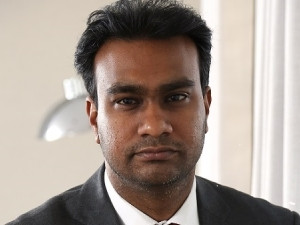
The rise of big data and advanced analytics has raised the potential for health services the world over to more easily track, control and eliminate possible pandemics. While this kind of disease management is obviously extremely important in a world where high speed transport means such diseases can spread rapidly, it is not the only use for such analytics.
Tracking data from healthcare workers and hospitals, social media, as well as transportation information is key to managing potential pandemics, but it is also very much a reactive use of analytics. Aneshan Ramaloo, Senior Business Solutions Manager at SAS, points out that when it comes to dealing with chronic diseases, there are also numerous proactive ways of using analytics.
"For example, big data and advanced analytics is now being widely used in cancer research.
Analytics has helped medical professions better understand the various lifestyle factors that contribute to cancer as well as assisting with early diagnosis, so that patients can be treated more quickly," he says.
"Analytics has also been an essential tool in the ongoing attempts to sequence the human genome, and a key part of this study of our DNA has been to discover markers that can be used for the early diagnosis and detection of disease, particularly in cancer patients. Furthermore, genetic analysis can also be utilised to weigh the risk of individuals getting cancer in the future."
In addition to this, analytics offers the potential to create more personalised medicines. With DNA and genetic markers factored in, along with things like age, demographic factors, previous medical records, gender, diet and even fatigue levels, it will become easier to diagnose potential health problems early, and to create very specific treatment regimens designed with an individual's unique genetic makeup in mind. Such treatments should result in both fewer side effects and more improved outcomes being experienced.
"One of the challenges with cancer treatments is that such therapies can be extremely gruelling, sometimes taking months before there is even a clear indication of whether they are working or not. Often by this time it is too late to change treatments if it is discovered the current one is not working. On the other hand, what if it were possible to tell within days or weeks if such a treatment is working?"
Ramaloo elaborates that a recent scientific study - one that has made use of crowd-sourced data from a number of different pharmaceutical companies - has revealed that a simple blood test might be able to can be used to articulate almost immediately whether or not a treatment is fighting off the disease in prostate cancer patients.
The crowd-sourced data that was analysed was derived from the Project Data Sphere (PDS) initiative, he adds, which is a data sharing platform designed to significantly advance cancer research, one in which SAS has played a key role.
Dr Howard Scher, Chief of the Genitourinary Oncology Service at the Sidney Kimmel Center for Prostate and Urologic Cancers led the research, which identified a very particular cell type with a specific pattern. This pattern is visible in the blood and can indicate sensitivity to cancer treatment. This means that anyone undergoing treatment who has these particular cells in their blood will know immediately that the treatment is working.
"With Project Data Sphere, a platform has been created specifically to provide one place where the medical community can broadly share, integrate and analyse historical patient level information, comparator arm data from academia and industry phase III cancer clinical trials."
"The goal here is a noble one, in that it is all about improving outcomes for cancer patients, and the aim is to spark innovation and help the cancer research community to unlock the potential of valuable information, by generating new insights and opening up a new world of research possibilities."
While analytics and medicine have been close bedfellows for a long time, he suggests, what has sparked this sea-change in research is a combination of various factors. Firstly, it is much cheaper than ever before to store data, the processing power of computers has also increased and finally, we have much more volume and variety of data that we can analyse. In addition, we have new algorithms that can better recognise patterns in the enormous amounts of data that are available.
Ramaloo adds that analytics can go further than ever before, and should be able to help medical professionals begin understanding the genetics of various diseases. In other words, why some diseases are more powerful than others, and also why some people are more resistant to various diseases. With this knowledge, it becomes easier to determine what treatments work best and why. Moreover, analytics can even drill down to the level of predicting issues such as a particular patient's predisposition to being hospitalised or having a particular medical condition - such as thyroid disease.
"By accessing the vast amounts of data that already exist with regard to cancer, and using advanced analytics to draw conclusions from it, doctors, hospitals and patients will reap numerous benefits. This includes improvement in the quality of care, identifying groups of patients with shared characteristics - so physicians can understand how other patients similar to theirs were treated - and making better use of electronic health records to understand a patient's treatments, side effects and outcomes."
"Ultimately, by analysing information from clinical research trials, doctors' notes, academic medical centres and other data sources, big data and analytics in healthcare can make use of data sharing to treat, prevent and cure cancer and other life threatening diseases," he concludes.
Share